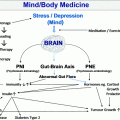Welcome and introduction to the clinic
This could be a one-pager that welcomes the patient to the clinic, provides an explanation of the philosophy of the clinic and the modalities offered, a brief introduction to the clinicians, and contact details of the clinic including Emergency Contact phone numbers
Stress reduction
This could include space to write down different strategies to reduce stress. Where meditation classes are recommended, the contact details of a meditation teacher might be included, for example
Diet
This might include space to list foods to incorporate into diet and foods to avoid
Sleep
Where sleep has been identified as an issue, this section could include some suggested sleep hygiene goals and details of some sleep enhancing therapies that could assist e.g. acupuncture, homoeopathy. Where supplements that might assist are recommended, these could be listed here
Vitamin D and sunshine
This section might list some goals for getting adequate sunshine, and an appointment schedule for assessment of vitamin D levels (if this has not been done) and re-assessment. Where Vit D supplements are recommended, this section should include recommended dosage and date for re-assessment to monitor vitamin D levels. Where IV vitamin D is recommended, the Wellness Plan should also include a re-assessment date
Exercise
If the clinician is skilled in exercise therapy, then this section could list some types of exercise that can be incorporated into the patient’s lifestyle. However, since many patients have co-morbidities that might preclude some of the simple exercise suggestions such as moderate walking or yoga, for example in a cancer patient with arthritis, an exercise plan is best handled by an exercise physiologist. Such professionals are trained to consider the various factors that need to be taken into consideration
Additional therapies
This section could be subdivided into several sections, for example:
• High-dose IV vitamins
• Oral vitamin supplements
• Complementary medicines and therapies
• Innovative technologies and therapies
High-dose IV vitamins
This section of the Wellness Plan should include a schedule of appointments, taking into account when the patient might be having other therapies. For example, in an integrative clinic in Hong Kong, patients who are having IV Vitamin C therapy also have acupuncture whilst they are sitting with the IV drip in their arm. In the National Institute of Integrative Medicine (NIIM) clinic in Australia, patients having hyperthermia may also have high dose IV Vitamin therapy delivered at the same time
Oral vitamin supplements
This section will include those recommended supplements including dosages
Complementary medicines and therapies
This section might simply include the contact details of the allied health/complementary medicine practitioner(s) (e.g. Chinese herbal medicine practitioner, acupuncturist, Western herbalist, homoeopathy practitioner, massage therapist) who are recommended by the integrative medicine doctor. The complementary medicine practitioner can then discuss the schedule of appointments with the patient, which could be inserted into the Wellness Plan as an attachment
Innovative technologies and treatments
Where an integrative medicine clinic provides additional, innovative diagnostic techniques e.g. circulating tumor cell testing and therapies such as hyperthermia, this section could include a schedule of appointments in relation to these
Working in an Integrated Healthcare Team: The Integrated Care Model of Practice
It’s very difficult to be an expert in everything, even for an integrative medicine doctor. An integrated care model is one in which a team approach to patient care is taken, one involving several practitioners of allied health and complementary medicine who work together with the general integrative medical practitioner and oncologist. An integrated care model is not one doctor trained in western medicine who is also trained in some additional form(s) of complementary medicine trying to manage the patient on their own.
Most patients with cancer have an oncologist and they also have a regular general practitioner or family doctor who plays an important role alongside the oncologist. If this general practitioner is an integrative medicine doctor, so much the better but it’s certainly not essential for the integrated care model. What is important is an open-mind and respect for other health professions. Other members of an integrated healthcare team include: nursing staff, nutritionalists, naturopaths, Chinese medicine practitioners, exercise physiologists, psychologists, meditation teachers, massage therapists and others.
Whilst some integrative medicine doctors have trained in additional complementary modalities, in particular nutrition/nutritional supplements, it is a rare one that knows the lot and is skilled in several forms of complementary medicine. It really does make sense to co-manage in a team and utilise the expertise of colleagues. The integrative medicine doctor or oncologist is in the ideal position to be the central pivot of the patient’s care.
Team Meetings
The ideal model is for a team to meet face-to-fact to discuss the patient’s case and agree on what different modalities may best help the patient. Then a range of options can be discussed with the patient who can make decisions about what they want to do, taking into consideration affordability, distance to travel and other practical considerations. In the end, it’s the patient’s decision—they may gravitate towards some therapies more than others, and that’s okay.
In practice it is sometimes difficult to get practitioners together, in particular if they don’t work in a multidisciplinary practice. However, you can work around this by using phone conferencing at a designated time. At this meeting, each person can discuss what their modality can contribute, and how frequently they might need to see the patient (for example, a nutritional medicine practitioner may want to see a patient every 3–4 weeks to monitor how they are doing with supplements and diet modifications, whereas an acupuncturist might want to see the patient on a weekly basis). The integrative doctor is ideally placed to coordinate and can monitor the patient’s progress.
Orthodox therapy may take precedence at certain times because of the time intensiveness of therapies such as radiation therapy. This needs to be considered in planning their care.
Stay updated, free articles. Join our Telegram channel

Full access? Get Clinical Tree





